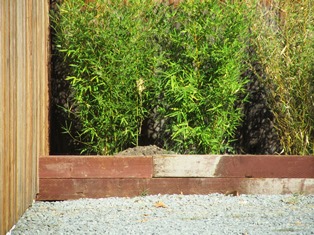Twenty Water Conservation Tips
California is in a historic drought. It’s our fourth year of below-normal rainfall and scientists, city governments, state lawmakers, and communities worry that this drought could run longer, perhaps even becoming a mega-drought. Wells are going dry, reservoirs in the state are lower than they’ve been in years, and water levels in rivers, lakes, and streams have shrunk.
Farmers have a right to be worried that their acreage may have to lay fallow. And what about the fruit and nut orchards? The Sierra snow pack that supplies much of the water to the Central Valley and Bay Area (where much of California and the nation’s food is grown) remains a fraction of what it has been in non-drought years. Salmon runs are being impacted. Water is getting more scarce and more expensive. And less food produced means higher food prices.
Recently, Governor Jerry Brown mandated water conservation throughout the state. Communities are implementing drastic measures to force their citizens to cut water use. But that doesn’t necessarily mean lower water bills if our communities have to buy water to make up a shortfall. Each of us must do our part.

Environmentalists value bamboo for its drought tolerance and landscape appeal; stone is an excellent element for zero landscaping and can be used with succulents or cacti
Twenty Tips to Cut Water Use
!. Install low-flow toilets and tub, sink faucets, and shower heads.
2. Use a front-loading washer rather than a top-loading version. The front-loading machines use roughly 20 gallons per load versus the 40 gallons of top-loading machines. We installed our energy-efficient front-loading washer when we moved in.
3. Wash laundry less often and make sure you set the machine for the right size load.
4. Take shorter showers with the drain closed. Capture the gently-used water in pails to recycle.
5. Use your energy-star dishwasher for cleaning dishes, glassware, and pans. You will use less water than by washing dishes by hand. But run the dishwasher only after it is full, not half-empty.
6. If you have a pool or hot tub, use a cover on it to prevent evaporation of water.
7. Wet your toothbrush, but then turn off the water as you brush your teeth.
8. Capture gray water (from the dishwasher, washing machine, shower, and sink). Gray water is gently used household water, not water from the toilet or sewer. Have a plumber install a gray water system to trees and plants on your property.
9. Completely turn off faucets to avoid drips. Also, fix any leaky faucets or water pipes.
10. Collect rainwater in plastic barrels and keep covered to eliminate the potential for mosquitoes breeding in the water.
11. Shower less often. Flush the toilet less often and never to flush away an insect or tissue. Use a lidded-waste can instead.
12. Use the broom to clean the sidewalk and driveway, not the garden hose and water.
13. Stop watering the lawn. Consider removing the lawn in favor of a landscape with drought-tolerant and indigenous plants. Or zeriscape, using bamboo, succulents, cacti, and stone.
14. Buy and use green products with the EPA-partnered WaterSense label.
15. Don’t throw out leftover ice cubes; use them to water a plant.
16. Never use running water to thaw meat or fish. Defrost overnight in the refrigerator.
17. Insulate water pipes to get hot water faster instead of running water through the faucet.
18. Install an instant water heater appliance under the sink to get hot water instantly rather than let the faucet run until the water gets hot.
19. When on vacation away from home, turn off the water softener to conserve water.
20. Recycle kitchen waste instead of putting it down the garbage disposal and running water. That recycled waste can become valuable compost for your garden and keeps it out of the septic system.
 Facebook
Facebook Goodreads
Goodreads LinkedIn
LinkedIn Meera Lester
Meera Lester Twitter
Twitter





